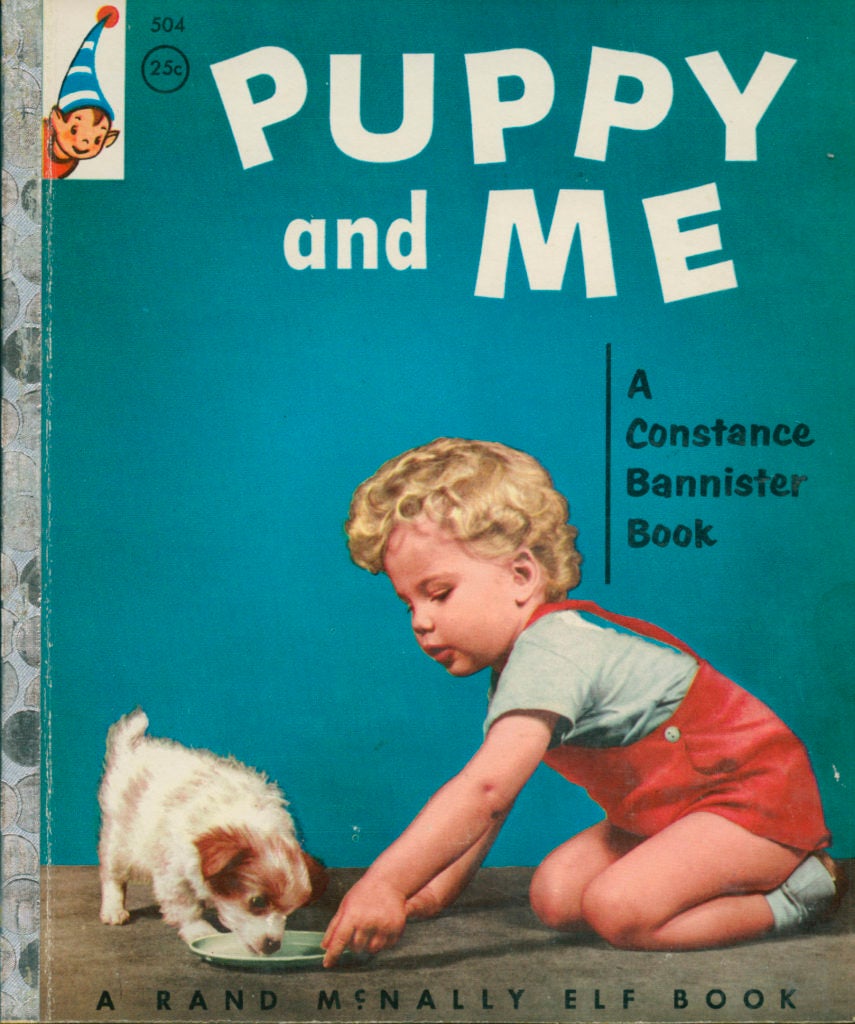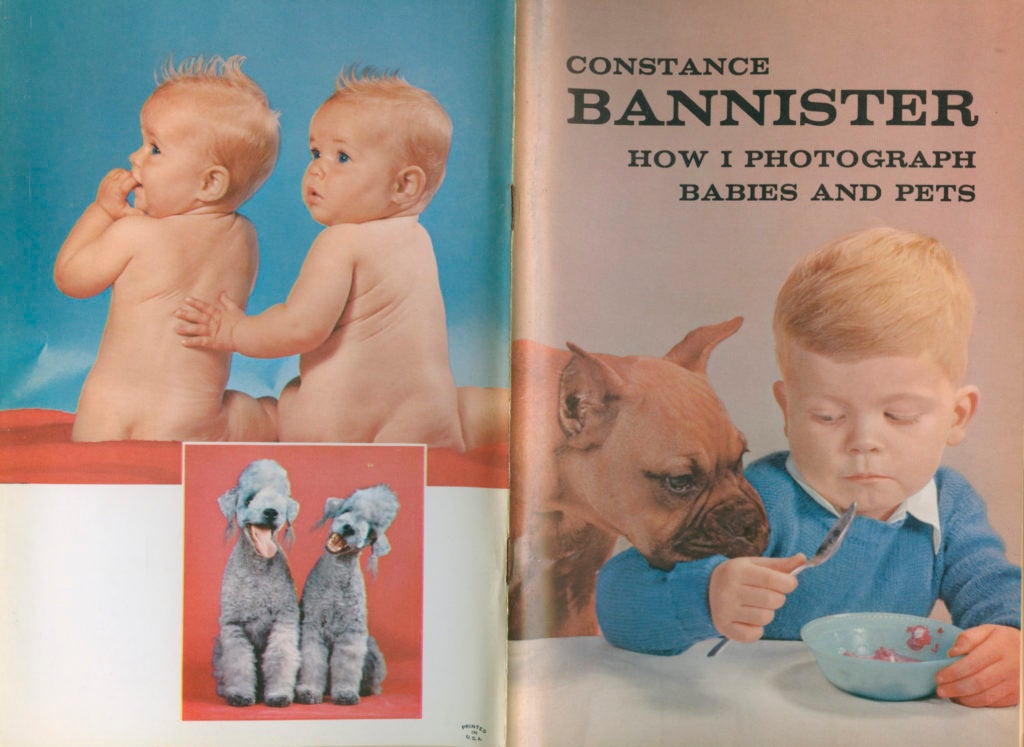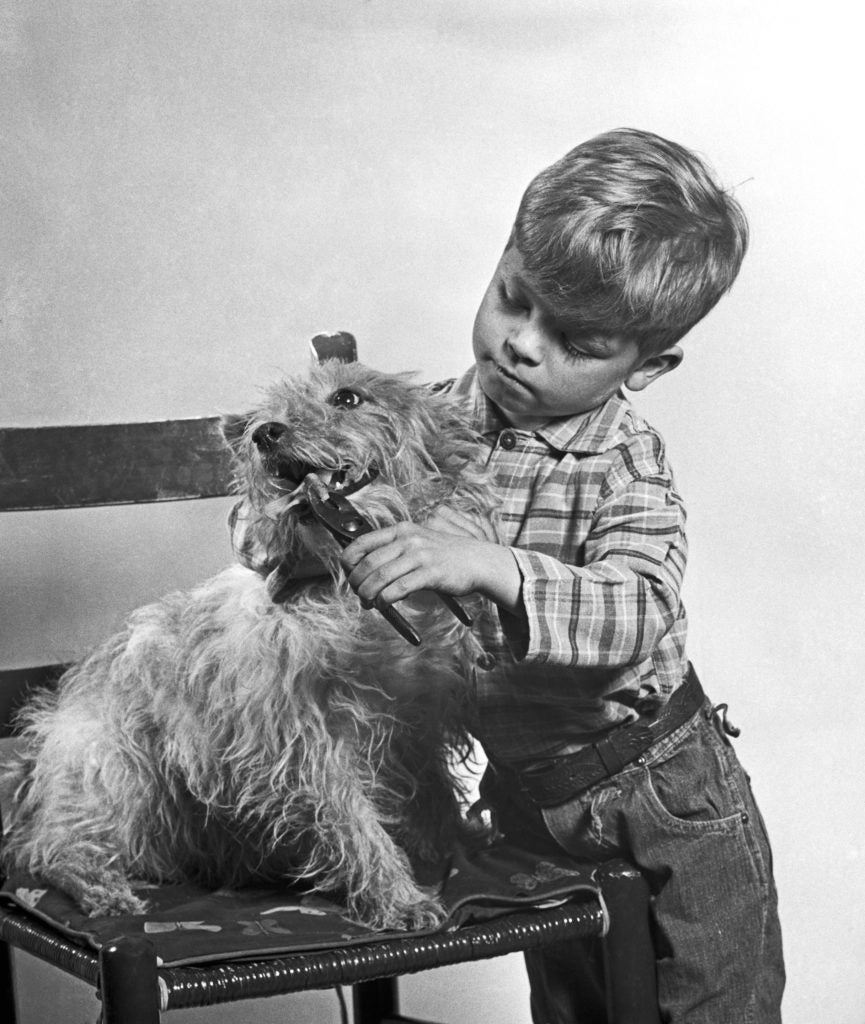
The AKC Museum of the Dog will feature Constance Bannister’s work starting July 9. The new exhibit is titled “Women & Dogs in Art in the 20th Century” and will highlight several female artists.
That great comedian and curmudgeon, W.C. Fields, warned of the perils of sharing the stage with animals or children. Both, he said, are unrepentant scene-stealers.
But for the late photographer Constance Bannister, the gravitational pull to children and animals led her to a body of work that many people enjoy viewing to this day. Even if you didn’t know who took the photographs, chances are you would recognize Bannister’s iconic shots of chubby-cheeked babies as they giggle, pout, splash, and cry. Bannister shot an estimated 100,000 baby photos – many of which appeared in books, calendars, billboards, and magazines.
She was also a talented photographer of animals, in particular dogs. A Boxer owner and, briefly, a breeder of Boxers, Bannister delighted in documenting the breed’s often human-like expressions, sometimes decking the dogs out in clothing and adding accessories, from eyeglasses to cigars.
Born on a Tennessee farm early in the last century, Bannister was one of 17 children in her family. When she moved to New York City in the 1930s, she enrolled in the School of Modern Photography and got her first job as a society photographer for the Associated Press. She eventually made a name for herself photographing socialites, Broadway stars, the New York City Ballet, and the Ice Capades.
One day, on a stroll through Central Park, she started taking photographs of children, returning the next day with prints to sell to their mothers. Soon, a thriving cottage industry was born.
“Parents just flocked to her,” says the photographer’s daughter, Lynda Bannister, of Littleton, Colorado, who inherited file cabinets filled with her mother’s sprawling collection of images and negatives. “Her love of babies just rolled into dogs. I don’t know who approached her or how it started, but she photographed quite a collection of dogs. It just consumed her.”

Photographing Many Breeds
Most of Bannister’s canine compositions were shot in the 1940s, before waves of returning veterans triggered a Baby Boom that cemented her fascination with the high chair set. To ensure she had a steady stream of canine subjects, the photographer often borrowed dogs from local breeders. While Boxers were one of Bannister’s favorite subjects, she photographed a wide spectrum of breeds, from lamblike Bedlington Terriers to cuddly Cocker Spaniels.
In 1949, Bannister bought a dog of her own, a female Boxer whose name was Deerecrest Fawn-Dawn, aka Duchess, bred by Marie L. Hosford of Greenwich, Connecticut. Bannister eventually bought a male Boxer and bred Duchess to him, and then gave the puppies away. Daughter Lynda Bannister says that after her mother died in 2005, some of those long-ago Boxer puppy owners sent emails, gushing and saying how much they loved those dogs.
Whether she was photographing babies or Boxers, Bannister employed similar techniques. In her slim 1958 book, “How I Photograph Babies and Pets,” she outlined six “simple secrets” for landing the perfect shot:
- Prepare well in advance to ensure you and your camera are at the ready.
- Get in very close on the subject, so it fills the screen.
- Keep things plain and simple, with no distracting patterns or cluttered backgrounds.
- Try to capture action, without too much posing or artificial orchestration.
- Give yourself lots of time.
- And be sure to enjoy the process.

Tricks of the Trade
In one of the book’s chapters devoted to pets, Bannister reiterates these six keywords – “ready,” “close,” “plain,” “action,” “time,” and “fun” – along with some of her tricks of the trade. Elicit expression by clucking or snapping your fingers. And, of course, have a deep reservoir of patience. “Even the tone and inflection of your voice are important in working with dogs,” Bannister advised her readers.
“She just had a knack, a way with babies, and animals, and people, to get them to do what she wanted them to do,” says Lynda Bannister, who recently retouched a photo of her mother’s that drove that point home.
In it, a young boy of about seven years of age is contemplating trying to pull a tooth out of a dog’s mouth with a pair of pliers. The younger Bannister was struck by her mother’s impeccable timing in getting the complex – to say nothing of potentially disastrous – shot. “There was absolutely no contact – she got the shot just before the little boy got hold of the tooth. And I thought to myself, ‘How did you do that?’”

Bannister had a full, fascinating, and high-profile career. She marketed a line of Bannister Baby dolls, responded to requests to photograph the children of celebrities such as Grace Kelly, and was also a World War II pinup girl. However, the photographer dropped out of public view in the mid-1970s. Retiring to Long Island, “she became a recluse,” Lynda Bannister says, “living on her little compound.”
But today her vision lives on, in thousands of impossibly precious photographs that capture exactly what we love about babies and dogs – their innocence, their magic, and their insistence on staying resolutely in the here and now.

